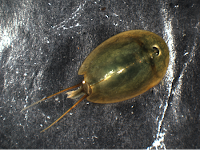There are a lot (17ish) of species of Paintbrush native to Wyoming, ranging in color from yellow to pink to red. The Berry Prairie was planted with three individuals of this beautiful plant, of the Castilleja angustifolia variety. Why only three? Well, they're difficult to propagate and to maintain in a cultivated setting (i.e., when they're not in a natural prairie). Our summer gardening intern, Jenna, explains below how she's trying to figure out how to successfully grown Indian Paintbrush - and if we're lucky, maybe we can move some into the Berry Prairie!
__________________________________________________________
Hello, my name is Jenna Ramunno; I am a senior studying Ag Business and Horticulture. I am the garden intern for the Berry Center, and my project is to cultivate Indian paintbrush.
Indian Paintbrush is Wyoming’s state flower and is unique because it is hemi-parasitic, meaning that it is capable of manufacturing its own food and obtaining water and nutrients from soil. However, it also forms specialized roots known as haustoria roots that attach to the roots of a host plant, providing additional water uptake for the paintbrush plant and possibly some organic and inorganic nutrients. This relationship does not kill the host plant.
I have planted two different species of paintbrush, Castilleja sessiliflora (below left) and Castilleja integra (below right). For the host plant I have three different plants to see what will work, Firecracker Penstemon (Penstemon eatonii), Fringed Sagewort (Artemisia frigida), and Rocky Mountain Penstemon (Penstemon strictus). The garden is located in front of the Berry Center directory sign by the South doors.
 |
| Castilleja sessiliflora |
 |
| Castilleja integra |
__________________________________________________________
Stay tuned as Jenna's research project develops over the summer. We might gather some tips for planting paintbrush in your yard!
Written by Brenna Marsicek and Jenna Ramunno, Biodiversity Institute











